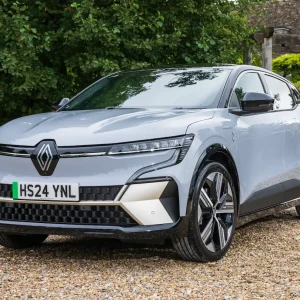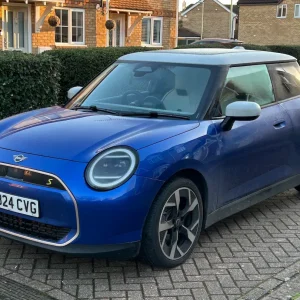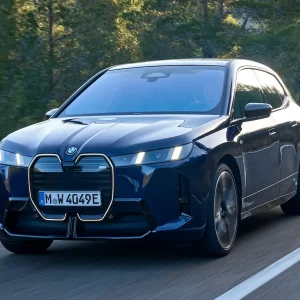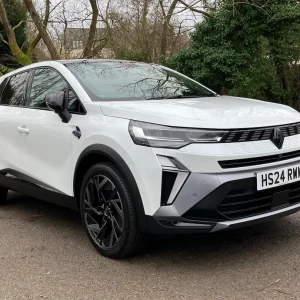Mazda it would seem has carved its own unique niche when it comes to how it powers its cars – as it still believes there is life in the combustion engine yet, and continues to develop and offer petrol and diesel engines,
However, Mazda appears to have made a concession to the future, in the fact that the first CX-60s in the UK will also be their first plug-in hybrids. In the CX-60, this means a Skyactiv-G 2.5-litre four-cylinder petrol is combined with a 128kW electric motor and 17.8kWh high-capacity battery.
Outside, the CX-60 demonstrates Mazda’s latest version of its “Kodo” design language. It is best described as attractive but doesn’t really stand out when compared to the rest of its SUV range.
Inside, like outside, is largely the same in the CX-60. However, it’s an attractive design, with logically-placed switchgear, which is backed up by quality materials and trim – a good sign considering its premium rivals, such as the Volvo XC60, that Mazda believes this car will be up against. Interior highlights include the 12.3in driver display, with its easy to read graphics.
Space in the front of this Mazda is adequate and the driving position is good. However, legroom is only average in the back, although despite the hybrid kit, the boot is a good size at 570 litres.
The CX-60 will be available in the UK in three equipment grade levels: Exclusive-Line, Homura and range-topping Takumi. We spent most of our time in the Homura, which Mazda believes will be the best-selling model for fleet. It’s equipped with Mazda’s clever Driver Personalisation System that will recognise the occupant of the driver’s seat via facial recognition and automatically adjust the surroundings – seat position, steering wheel, mirrors, head-up display, even the sound and climate control settings – we tried it and it worked reasonably well.
Combined, the CX-60 has a total output of 327hp, plus 500Nm of torque and a 0-62mph acceleration time of 5.8 seconds – but it never feels that fast on the road. Think more refinement than performance, but that is shattered should you need to accelerate hard, as the engine gets strained and coarse.
Officially, the CX-60 has a 39-mile EV-only range, which seems believable, as we saw around 35 miles on the test route. This puts the CX-60 into the 12% BiK, but as previously noted when we drove it on the international launch, it’s a shame Mazda couldn’t have eked out another mile of range to drop this into the 8%
band instead.
On the road, the CX-60 is a keen drive. The steering is decently precise, and the CX-60 is a tidy handler, plus the security of four-wheel drive. With the hybrid kit, the CX-60 is a heavy car (around two tonnes) and on some occasions, when the suspension compresses, you can feel some body float. The ride is stiff, but not uncomfortable.
The brakes are also hard to modulate at low speeds, and we found the throttle response snatchy on occasions – especially when the hybrid battery is empty.
Overall though, the CX-60 impresses,.It’s high quality, well-equipped, offers a keen drive and is cheaper to buy and run than premium rivals. Plus, strong residual values mean this Mazda performs well on a cost-per-mile basis.
Protected UK stock, plus a realisation by Mazda UK of how important their biggest car is to the fleet market, should make this a popular choice. Diesel versions of the CX-60 will be next to arrive before the end of 2022.
Mazda CX-60 E-Skyactiv PHEV Homura
P11D: £46,645
Residual value: 46.87%
Depreciation: £24,781
Fuel: £2,672
Service, maintenance and repair: £2,956
Cost per mile: 50.68p
Fuel consumption: 188.3mpg
CO2 (BIK %): 33g/km (12%)
BIK 20/40% a month: £93/£187
Luggage capacity: 570 litres
Engine size/power: 2,488cc/190hp petrol engine plus 175hp electric motor





